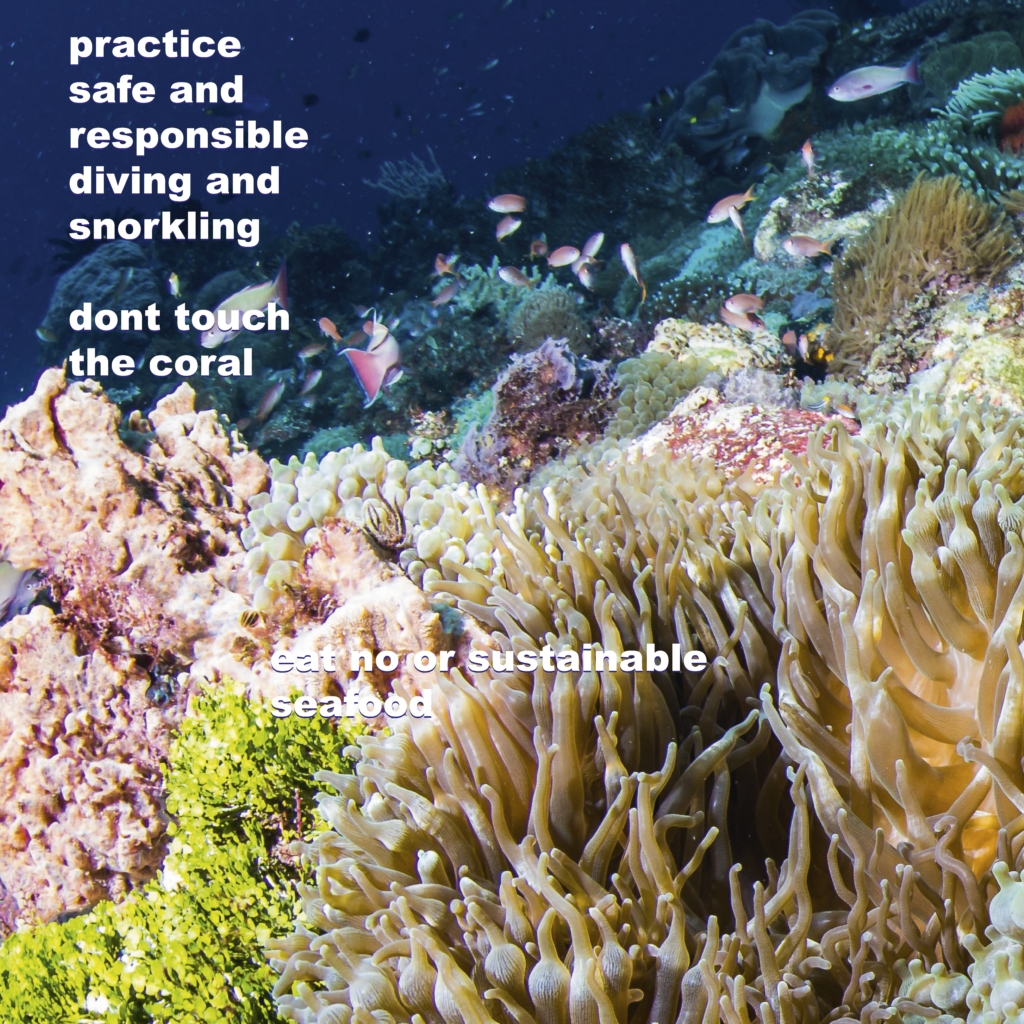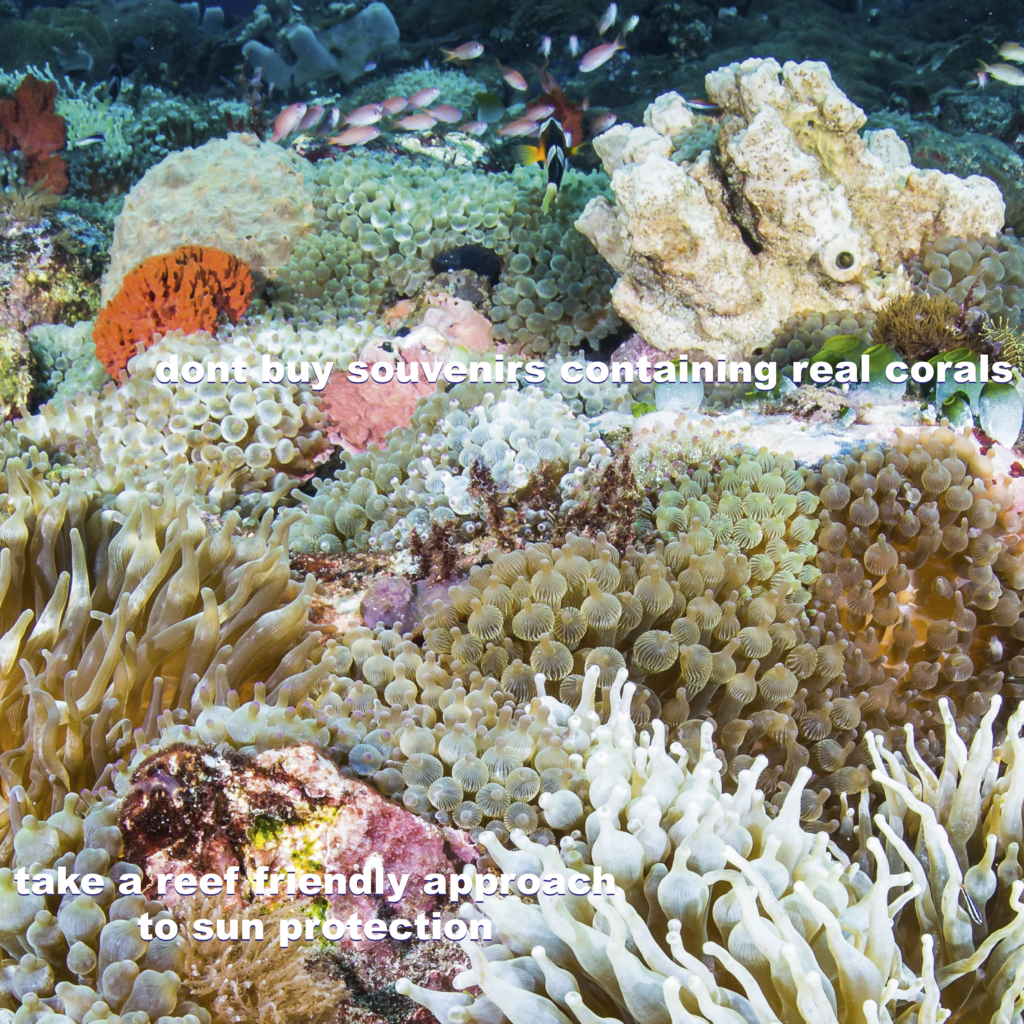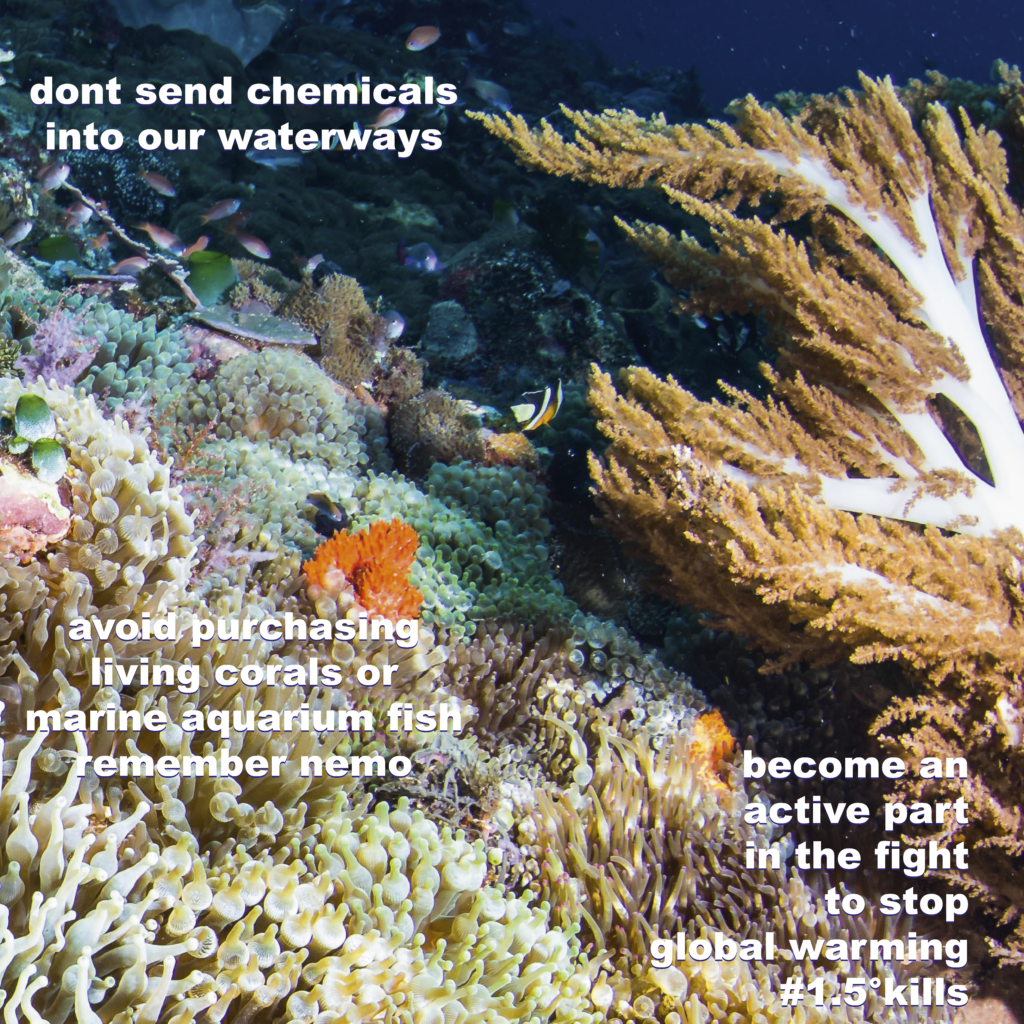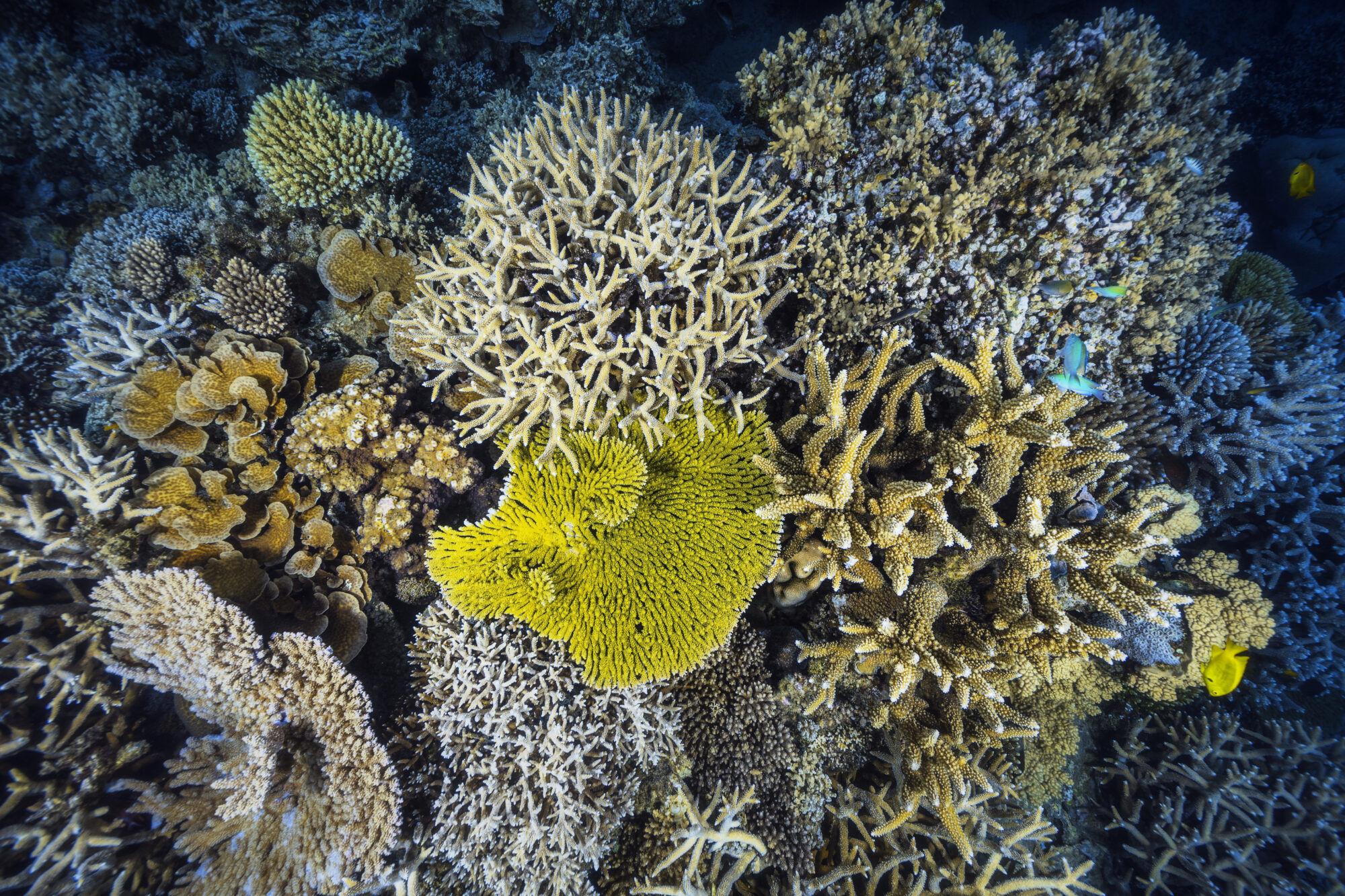Corals are Old!
Coral reefs first appear 400 million years ago; however, at that time reefs were only made up of a singular organism.While most organisms and organism structures have evolved since the time of the dinosaurs, coral reefs have not: in fact, they have stayed almost exactly the same. Even today they can live up to 5000 years.
Korallen sind alt! Korallenriffe traten erstmals vor 400 Millionen Jahren auf; damals bestanden die Riffe jedoch nur aus einem einzigen Organismus.Während sich die meisten Organismen und Organismusstrukturen seit der Zeit der Dinosaurier weiterentwickelt haben, war das bei den Korallenriffen nicht der Fall: Sie sind fast genau gleich geblieben. Auch heute noch können sie bis zu 5000 Jahre alt werden.
The coral acts like a natural filter.
Coral reefs help protect nearshore waters from pollution. Many corals and sponges are filter feeders, meaning they eat the particles in the water. This can have a significant impact on water quality, which benefits the entire ecosystem.
Korallenriffe tragen dazu bei, küstennahe Gewässer vor Verschmutzung zu schützen. Viele Korallen und Schwämme sind Filtrierer, d. h. sie ernähren sich von den Partikeln im Wasser. Dies kann sich erheblich auf die Wasserqualität auswirken, was dem gesamten Ökosystem zugute kommt.
Coral Reefs are called the rainforests of the ocean due to their biodiversity.
Coral reefs, which cover less than one percent of the ocean floor, are home to an estimated 25 percent of all known marine species. Scientists estimate that more than one million plant and animal species are associated with coral reef ecosystems. Therefore, coral reefs have earned the title of marine rainforests, as they are the second most biodiverse habitat on earth after rainforests.
Korallenriffe, die weniger als ein Prozent des Meeresbodens bedecken, beherbergen schätzungsweise 25 Prozent aller bekannten Meeresarten. Wissenschaftler schätzen, dass mehr als eine Million Pflanzen- und Tierarten mit Korallenriff-Ökosystemen verbunden sind. Daher haben Korallenriffe den Titel des marinen Regenwaldes verdient da sie nach dem Regenwald der zweite artenreichste Lebensraum der Erde sind.
The corals live in a symbiotic partnership with organisms that build their exoskeleton.
Corals are not plants, but animals. To be precise, they are cnidarians just like jellyfish. Corals do not have arms, legs and faces, but consist of many individual tiny animals called polyps. Most corals need so-called zooxanthellae to survive. These are algae that settle in the outer skin of the polyp. Algae and polyp live in a symbiosis, i.e. in a biological community of purpose that benefits both sides.
Korallen sind keine Pflanzen, sondern Tiere. Um genau zu sein sind sie Nesseltiere ebenso wie Quallen. Korallen haben keine Arme, Beine und Gesichter, sondern bestehen aus vielen einzelnen winzigen Tieren, die Polypen heißen. Die meisten Korallen brauchen zum Überleben sogenannte Zooxanthellen. Das sind Algen, die sich in der Außenhaut des Polypen ansiedeln. Alge und Polyp leben in einer Symbiose, also in einer biologischen Zweckgemeinschaft, die beiden Seiten Vorteile bringt.
The characteristic of coral reefs acting as a natural carbon sink makes them even more valuable in therms of global warming.
Tiny photosynthetic cells inside plants and coral are masters at storing carbon. All green plants — including seagrass, mangroves and the algae that live inside coral — are able to absorb carbon dioxide molecules from the air and turn them into food and energy, in a process known as photosynthesis.
Winzige photosynthetische Zellen in Pflanzen und Korallen sind Meister im Speichern von Kohlenstoff. Alle grünen Pflanzen – einschließlich Seegras, Mangroven und Algen, die in Korallen leben – sind in der Lage, Kohlendioxidmoleküle aus der Luft zu absorbieren und sie in Nahrung und Energie umzuwandeln – ein Prozess, der als Photosynthese bekannt ist.
The destruction of a coral reef leads to a realistic rising thread to people living close to shore who lose their natural barrier against the waves.
Corals form barriers to protect the shoreline from waves and storms. The coral reef structure buffers shorelines against waves, storms, and floods, helping to prevent loss of life, property damage, and erosion. The destruction of a coral reef exposes people living near the coast to a growing very real danger.
Korallen bilden Barrieren, die die Küstenlinie vor Wellen und Stürmen schützen. Die Korallenriffstruktur puffert die Küstenlinie gegen Wellen, Stürme und Überschwemmungen ab und hilft, den Verlust von Menschenleben, Sachschäden und Erosion zu verhindern. Die Zerstörung eines Korallenriffs führt dazu, dass die Menschen, die in Küstennähe leben, einer wachsenden sehr realen Gefahr ausgesetzt werden.
The corals don’t die because they are sick of life 😉
In a joint study, scientists from Jacobs University Bremen, the Leibniz Centre for Tropical Marine Research (ZMT) and the University of Bremen have for the first time predicted the vulnerability of tropical coral reef habitats to measurable environmental factors. According to the study, 94 percent of the world’s coral reef habitats must be considered endangered, whereas only six percent of the habitats can be considered as reef refugia, as largely unaffected areas.
In einer gemeinsamen Studie haben Wissenschaftler der Jacobs University Bremen, des Leibniz-Zentrums für Marine Tropenforschung (ZMT) und der Universität Bremen erstmals die Anfälligkeit tropischer Korallenriff-Lebensräume gegenüber messbaren Umweltfaktoren prognostiziert. Demnach müssen 94 Prozent der weltweiten Korallenriff-Lebensräume als gefährdet angesehen werden, während nur sechs Prozent der Lebensräume als Riff-Refugien, also als weitgehend unbeeinflusste Gebiete, gelten können.
The stressed corals die which leads to the phenomenon of coral bleaching that just means that the corals die and leave their white skeleton.
Rising (or even falling) water temperatures, as well as ocean acidification, can stress coral polyps, causing them to lose the algae that live in the polyps‘ tissues. This leads to „coral bleaching,“ so called because the algae give the corals their color, and when the algae die, only the white skeleton remains.
Steigende (oder sogar sinkende) Wassertemperaturen sowie eine Versauerung des Ozeane können Korallenpolypen stressen, so dass sie die Algen verlieren, die im Gewebe der Polypen leben. Dies führt zu einer „Korallenbleiche“, die so genannt wird, weil die Algen den Korallen ihre Farbe geben, und wenn die Algen sterben, bleibt nur das weiße Skelett zurück.



To learn more about corals and about effective ways to help sustain them check out the Coral Reef Alliance. Link below.
Corporate Partners

